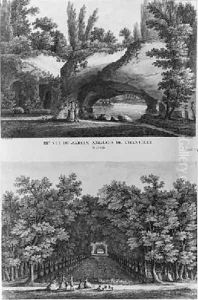Lacombe Paintings
Georges Lacombe was a French sculptor and painter, recognized for his contributions to the Symbolist movement and the Nabis group. Born on June 18, 1868, in Versailles, France, Lacombe developed an early interest in art, which was supported by his family's comfortable financial standing. He initially studied law, following family expectations, but his passion for art led him to abandon his legal studies and devote himself fully to the pursuit of artistic endeavors.
Lacombe's artistic journey began under the tutelage of traditional sculptors, but his style and interests quickly evolved as he became immersed in the avant-garde circles of Paris. It was his association with the Nabis, a group of post-impressionist artists that included Pierre Bonnard and Édouard Vuillard, that significantly shaped his artistic direction. The Nabis were interested in integrating symbolism and personal expression into their art, moving away from the representational and towards the abstract. Lacombe's work, both in sculpture and painting, embodied the Nabis' ideals, characterized by its stylization, use of bold colors, and often mystical or symbolic themes.
Though less known for his paintings, Lacombe's sculptural works, particularly those in wood, are notable for their innovative techniques and the integration of Symbolist themes. He was inspired by medieval and primitive art forms, as seen in his use of simplified shapes and emphasis on materiality. His sculptures often depicted themes of nature, mythology, and human emotion, reflecting his interest in the spiritual and the transcendental.
Despite his contributions to the Symbolist movement and his active role within the Nabis group, Lacombe's work was somewhat overshadowed by his more famous contemporaries. Nevertheless, his artistic legacy is recognized for its unique blend of sculptural tradition and avant-garde experimentation. Georges Lacombe passed away on June 29, 1916, in Alençon, France. His work continues to be appreciated for its poetic integration of form and emotion, standing as a testament to the innovative spirit of early 20th-century art.
